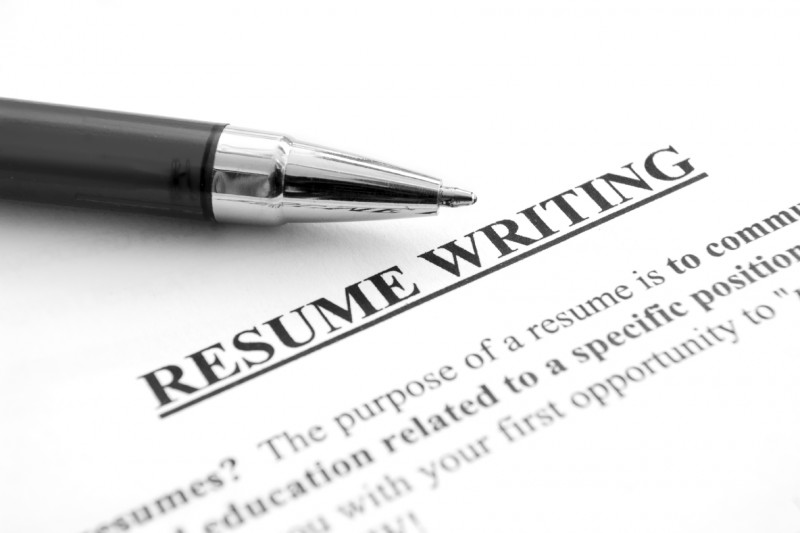
When applying for a coaching position, having a resume that stands out to the search committee is the only way to get noticed. However, if it stands out in the wrong way, being noticed means you just got eliminated. I have been involved in hiring for quite some time and have probably viewed thousands of resumes from prospective coaches seeking intern, graduate assistant, and full-time positions. In our last search, we received well over 100 resumes for a graduate assistant position. Full-time positions will draw even more resumes. If we are talking about a top school from one of the major conferences, this number is likely to increase dramatically. Every time I look at resumes I am in amazement at how poorly many of these resumes are put together.
If you are still in school, whether it be undergrad or graduate school, you have access to free resume writing services. If you are out of school, there are many free resources online or available for purchase at minimal cost that can point you in the right direction for creating a good resume. If you are not taking advantage of these services, you are a moron. In any true search, your resume is the written presentation of who you are to the prospective employer. A bad presentation will automatically get you dismissed from the search.
RECENT: The Best Positions for Training and Coaching Your Athletes
There are many aspects to creating a good presentation through your resume. I am not going to discuss the quality of content for a resume in this article. Instead, I am going to take an in-depth look at what should be basic resume writing skills. This article is geared to strength coaches, not businesses professionals, teachers, scientists, or artists. It is important to understand that each profession will view resumes quite differently. Everything mentioned below, I have actually seen on real resumes, and many of these issues on multiple resumes.
Aesthetics and Formatting
First off, your resume needs to be pleasing to the eye. It should not just be plain text typed on a sheet of paper. Using bold/italics, different fonts, and proper spacing between sections all make a difference in how your resume is viewed by the reader. Formatting should be consistent from start to finish. Each section of your resume should use the same basic formatting. Each section should be clearly differentiated from the previous and next sections. All of these things make it easier to be read by the prospective employer. When looking at over 100 resumes, you do not want to have to sort through a resume to figure it out. Many coaches won’t take the time to do so.
Contact Information
All of your contact information should be at the top of your resume and presented in an easy to understand manner. This may sound like a given, but you’d be surprised how confusing some applicants make their contact info. Also, when you list your address, also list the state you live in, not just the city. And, finally, keep it updated. Don’t forget to change your address when you change positions. It doesn’t look right when looking at a resume that says the person lives in Texas, but currently holds a position in Hawaii. If things don’t add up, you may have just eliminated yourself.
Resume Order
While there are different methods of writing resumes, most strength coaches I have talked to seem to want to see the same basic thing. First off, your education should be the first section of your resume. We work long hours and are looking at a lot of resumes (100 plus for each position), so don’t make our heads spin trying to find the information for which we are looking.
Next, use reverse chronological order for each section of your resume. Start with the most recent and work to the oldest. Do not jump around as you see fit. Even if you are trying to highlight certain positions, don’t list them first just to get our attention. List them in the proper order. Remember, you don’t want to make our heads spin. In the process of pulling out our hair, we may just toss your resume in the trash can.
Objective
Don’t list your objective. It is completely pointless and a waste of space. We already know why you are applying. And for those of you that like to give some crazy BS reason, I could really care less. I spot that stuff a mile away and am not interested in someone who is going to feed me a line of BS on their resume because that just means that is what we will get from them if we were to hire them.
Education
Put your education on your resume! There are minimum requirements for every position. We have to know what your education level is, and we are not going to call you to find out when we can just as easily move on to the next resume that is done correctly. Also, don’t just tell us you went to Big Time U. Tell us what degree you received or when you will complete your degree. Tell us what you studied and the years you attended each school. Even if you have an unrelated degree, you should still list it on your resume, unless you have another degree that is more relevant.
Number of Pages
There seems to be a lot of disagreement on this topic, and I personally feel it is way over-discussed. Some people are in the one-page camp, while others say list everything that is important. A one page or a three page resume makes no difference to me when I am reading it. However, ten to fifteen page resumes are definitely overkill and unnecessary. And, yes, I have received resumes over ten pages in length, excluding the cover letter and references. We don’t want to read a book about your career. We have one hundred other resumes still to go through. If we get bored, we may just move on.
Include Dates
Include dates for everything on your resume. Create a timeline for us. We want to see when you held each position and how you have moved through your career. If you don’t list the dates, we may assume there is something you don’t want us to know. And, that tells us what we need to know.
Color and Logos
In our recent hire, we had several applicants use school logos, pictures, and other color elements in their resume. While pictures are unnecessary, I have not seen the use of logos before, and they definitely caught my attention. They were much more visually pleasing than the standard bullet and created a different sense of organization that, in my opinion, worked well. But, the risk is overuse or making the logos too big, both of which are distracting to the content that you want us to see.
No Fun Facts
Usually these are listed in the Special Skills or Other Interests sections. Both of these sections should be eliminated from your resume immediately. The Special Skills section is debatable and can be kept if the skills listed are relevant to coaching or other skills that could be useful in the position. Speaking a different language would be an example of a relevant skill. Being able to work a Rubik’s cube in under sixty seconds is not a relevant skill. Having the highest scoring average in the nation and also stating that you only took one shot that entire season would not be qualifying as relevant information. While these facts may be interesting and fun, they do not tell the employer that you are serious about the position for which you are applying. Furthermore, they distract our attention from the points that you want us to pay attention to.
References
I have a few points on this topic, all of which should be adhered to. First off, your references should be listed on a separate page at the end of your resume and need to follow the same formatting as the resume. Don’t just type a few names with contact info on a sheet and leave it at that. Make the reference page presentable. Also make each name stand out with bold or italics. The names of your references are important, so make it easy for us to see.
Next, keep your references updated. If you make it to the interview process and we call your references, the last thing we want to do is have an invalid phone number. Don’t make us work harder than we need to. If you want us to hire you, make it easy on us.
MORE: The 5 Cs Every Coach Needs
List your references. Do not use "references available upon request." Yes, the people listed as your references are important. That may be the one thing on your resume that gets you the interview. I, personally, will not request references. If they are not there, I will move on. And, most importantly, if the position announcement stated to send your references, then the references have already been requested. We are not going to ask you twice.
How many references should you list? Three is the standard. Three to five is perfectly acceptable. There is no need to list more than five. Put your best ones down, and if you think someone that is not currently on your list could help you with a specific position, trade them for the weakest reference currently on the list. There is no need to list ten references. This is overkill. What are you trying to prove by listing so many references? Keep it to no more than five.
Wrapping it Up
Your resume is your written presentation of you. If you have a bad presentation, it can be assumed that you will not be a good hire. A resume with poor aesthetics shows that you may not be good at self or department presentation, which is crucial at the collegiate level. A resume with poor organization shows just that. We work a lot of hours with many teams and fill many roles, so it is crucial that we have good organizational skills. Inconsistent formatting and frequent spelling and typographical errors displays your poor attention to detail, which is a strong quality in a good coach. While you want your resume to stand out, you still want it to follow a standard that will allow the hiring coach to easily sort through it.
David Adamson has been Assistant Director of Speed, Strength, and Conditioning for the University of Texas at El Paso since 2007. He has been involved in coaching at the university level since 2002, including stops at Virginia Commonwealth University and Arizona State University. In addition to coaching, David lives by his experience under the bar. He began lifting in 1993, and has been a competitive powerlifter since 2001. He has competed raw, in single-ply, and in multi-ply gear, and currently competes in the 242 lb weight class.











1) A resume is only a way to get to the next step, which is a phone call.
It doesn't need to be a complete story of everything about you, but it does have to show that you're a good fit for this particular position.
2) Your resume has about 30 seconds to say everything it's going to say.
People in charge of hiring recieve too many resumes for each position, and can't afford to spend a long time on each one. Make it concise.